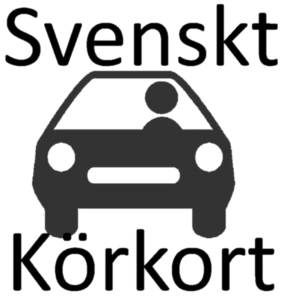10 Situations When You'll Need To Be Educated About De Driving License
Understanding the Driving License: A Comprehensive Guide
A driving license is an important file for individuals who want to run an automobile lawfully. This guide aims to supply an in-depth understanding of the driving license, including its types, requirements, application processes, and the significance it keeps in today's fast-paced society.
What is a Driving License?
A driving license is a government-issued document that licenses an individual to drive an automobile on public roadways. This license is important not only for adherence to the law however likewise as a procedure of competency to make sure that motorists possess the required skills to operate a car safely.
Types of Driving Licenses
Driving licenses differ by jurisdiction, and they can be categorized into numerous types. Here's a breakdown:
License Type
Description
Learner's Permit
A provisional license allowing brand-new motorists to practice under particular conditions.
Complete License
A standard chauffeur's license permitting the holder to operate most types of lorries without limitations.
Commercial License
Essential for individuals wishing to run industrial trucks or buses.
Bike License
Specifically designated for running motorcycles and motorbikes.
International Permit
Allows people to drive in foreign countries, provided they have a valid nationwide license.
Why is a Driving License Important?
Holding a legitimate driving license has numerous advantages:
- Legal Requirement: It is a legal requirement to drive on public roads.
- Safety Assurance: A driving license guarantees that the motorist has actually gone through necessary training and evaluations to operate a vehicle securely.
- Identification: It serves as an official type of identification, typically required for various services.
- Insurance coverage Compliance: Many cars and truck insurance business require valid driving licenses as one of the conditions for issuing a policy.
- Work Opportunities: Certain tasks require staff members to have a valid driving license, especially those including transport.
How to Obtain a Driving License
The process of acquiring a driving license usually involves several actions, which can differ by area. Below is a standard summary of the steps to follow:
- Eligibility Check: Most jurisdictions have age and residency requirements.
- Composed Test: Applicants usually need to pass a composed exam covering the rules of the road.
- Vision Test: A vision evaluation may be needed to ensure the candidate can see well sufficient to drive securely.
- Practical Driving Test: New motorists must demonstrate their driving skills in a useful test.
- Application Submission: Complete the required types and send the essential paperwork, consisting of evidence of identity and residency.
- Payment of Fees: Pay any involved charges for the application procedure.
- Waiting Period: Some areas have a probationary duration during which a student's authorization should be held before a complete license is issued.
Typical Requirements for Application
- Evidence of identity (e.g., birth certificate, passport)
- Social Security number or comparable identification
- Evidence of residency (e.g., utility bills, rental agreements)
- Completion of a chauffeur's education course (if applicable)
Tables: A Comparative Look at Driving License Categories
The following table highlights distinctions in requirements and features of various kinds of driving licenses:
Type of License
Age Requirement
Checking Requirements
Limitations
Student's Permit
Varies, normally 15-16
Written, vision
Needs a certified adult in the automobile
Complete License
Usually 18+
Written, vision, useful
None (unless specific endorsements use)
Commercial License
Usually 18+
Written, vision, useful, extra tests
Limited to industrial vehicles only
Motorbike License
Varies, normally 16
Written, vision, practical
Usually limited to motorbikes only
International Permit
18+
Valid nationwide license required
Legitimate in countries that recognize it
FAQs About Driving Licenses
1. The length of time does it take to get a driving license?
The timeline differs by region and specific scenarios, however a simple procedure that includes taking a course and completing tests may take several weeks to a few months.
2. What should I do if I lose my driving license?
In case of loss, report the event to regional authorities and obtain a replacement through the appropriate automobile department.
3. Can I use an international driving permit in my home nation?
A lot of nations need a valid national license, and an international driving license is intended for use abroad. Always check regional laws.
4. Are there specific laws for drivers under 18?
Yes, many places have actually graduated licensing laws that impose restrictions on younger chauffeurs, such as passenger limitations and nighttime curfews.
5. What occurs if I get caught driving without a license?
Driving without a legitimate license can cause fines, vehicle impoundment, and even legal charges, depending on local laws.
In conclusion, getting a driving license is a significant turning point for lots of people. It involves a structured process designed to ensure safety and legality on the roads. Comprehending Adress Transportstyrelsen , value, and application procedures can empower potential motorists to browse their licensing journey with confidence. Whether for individual usage or professional purposes, a driving license is a valuable possession in the contemporary world.
